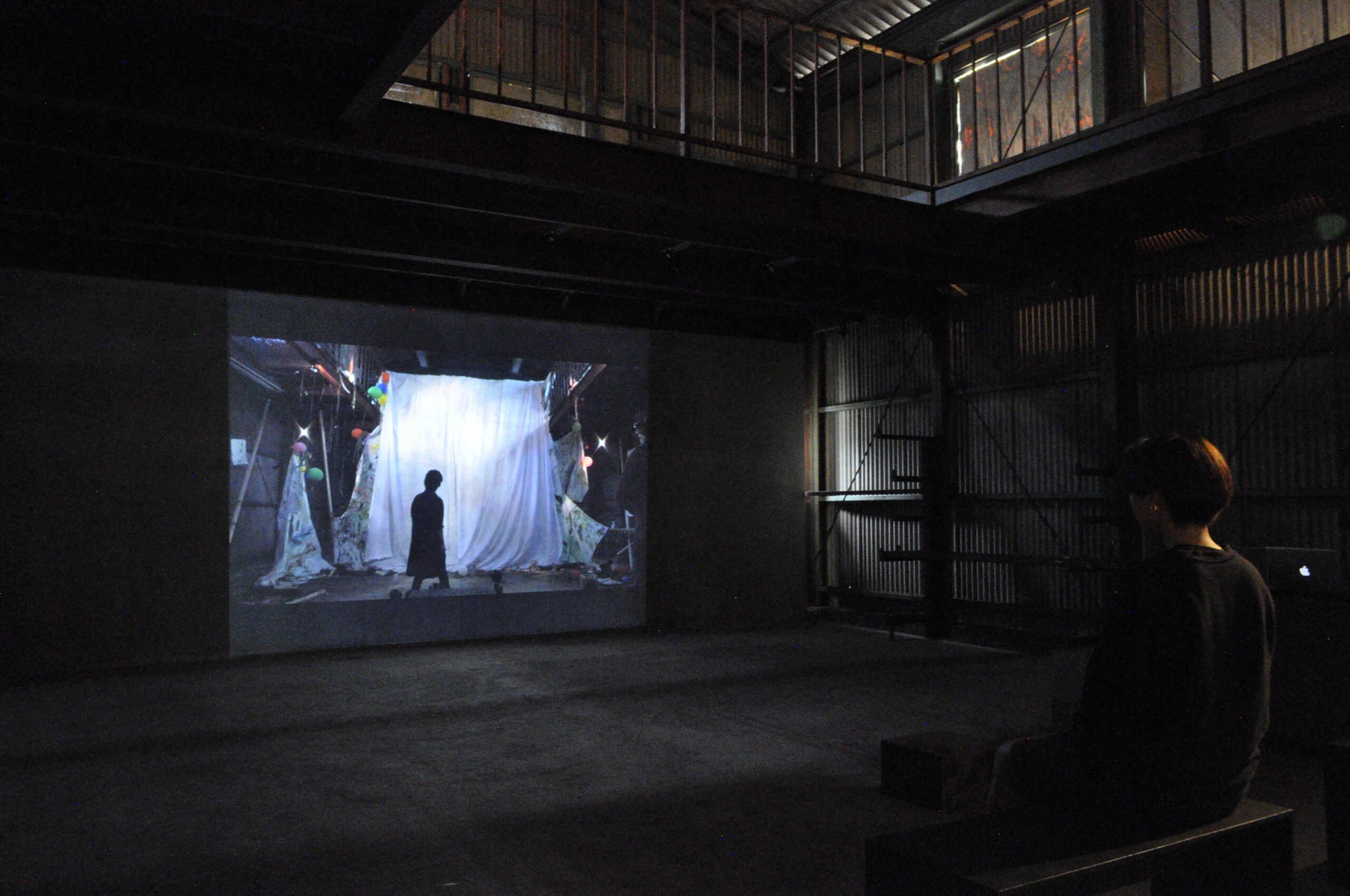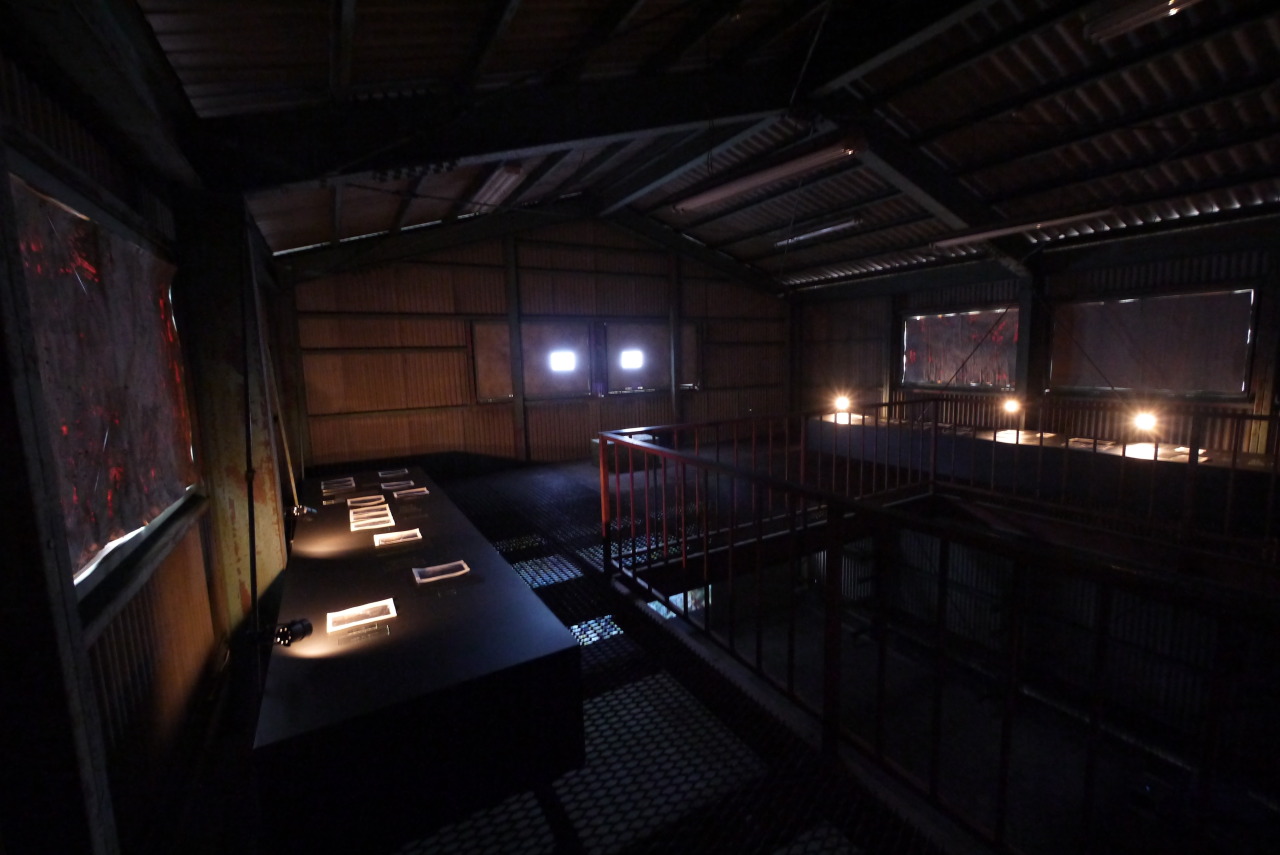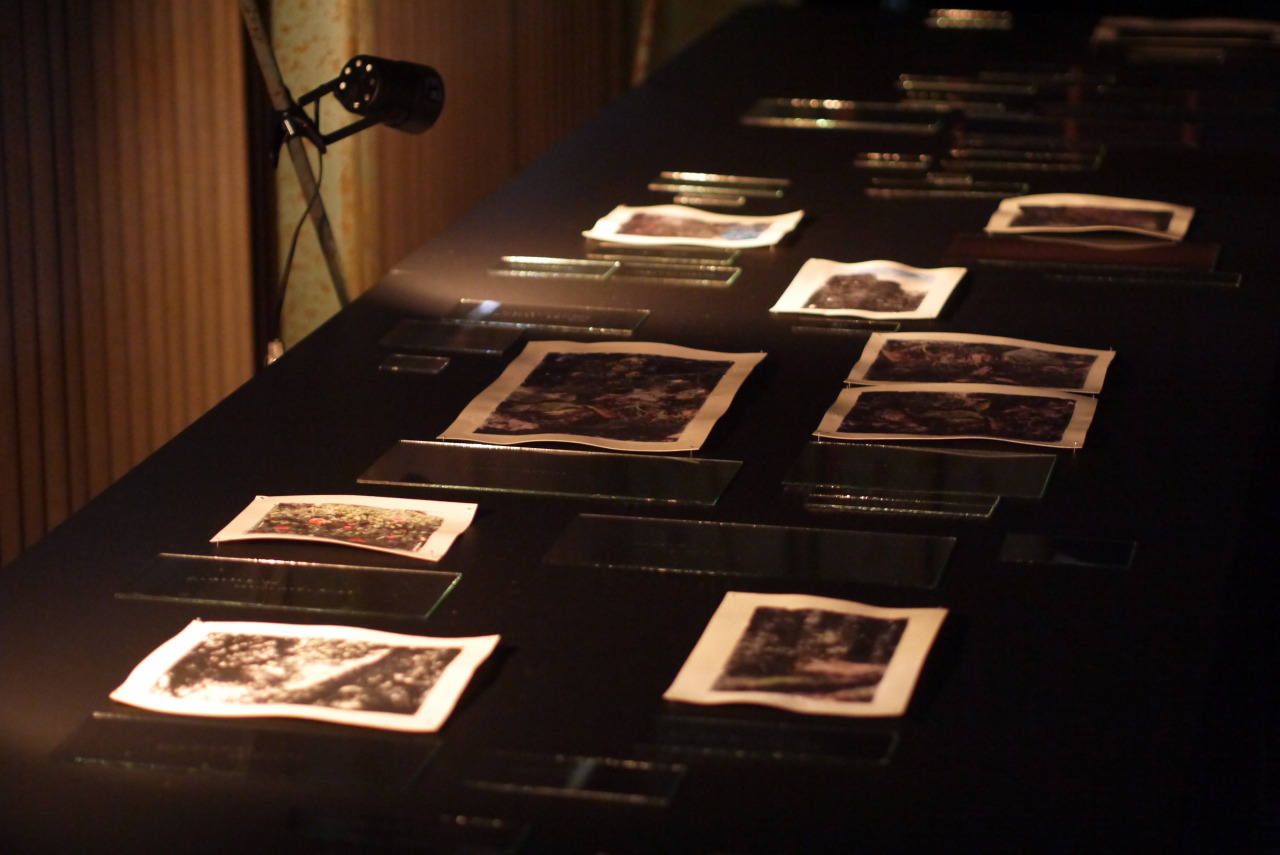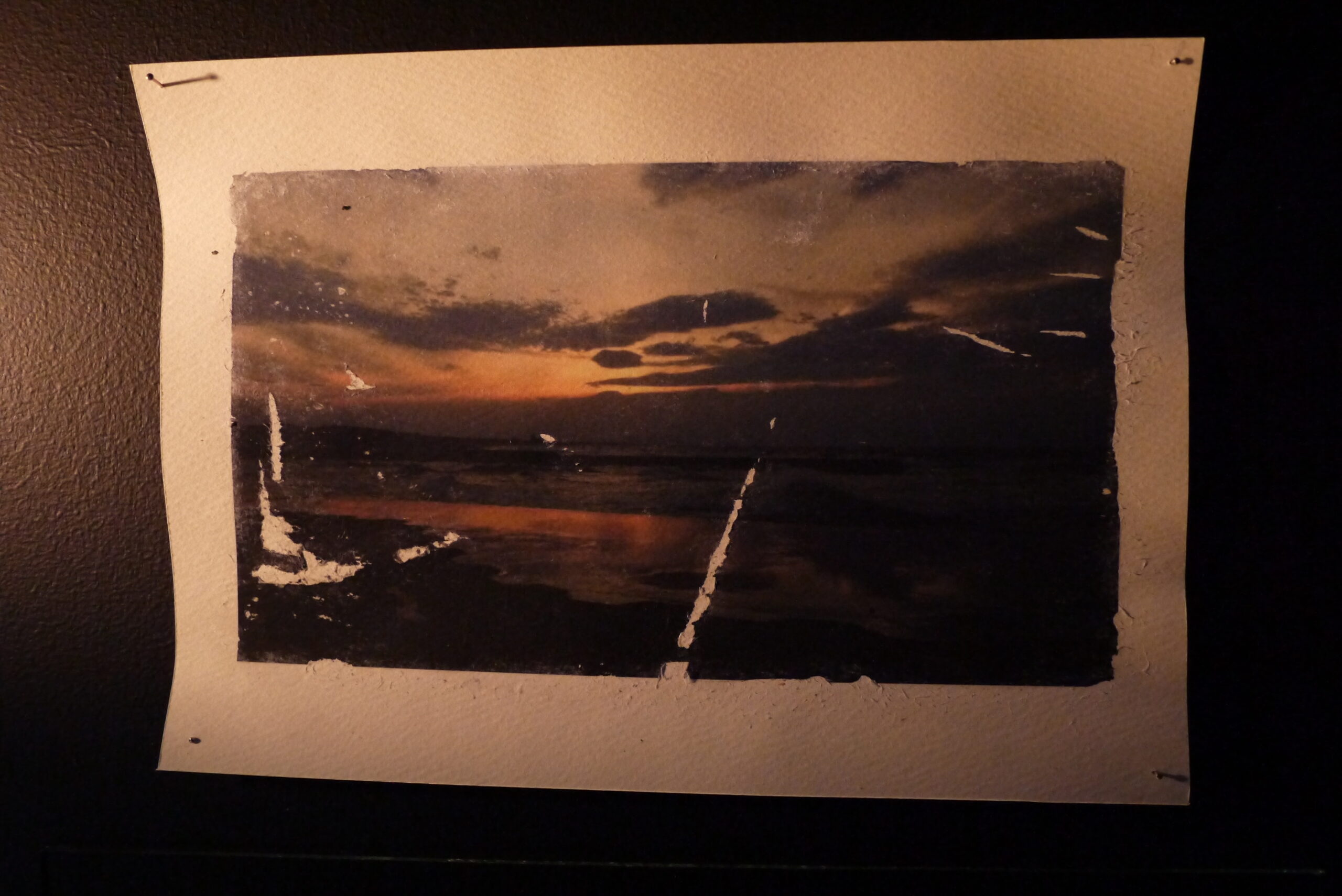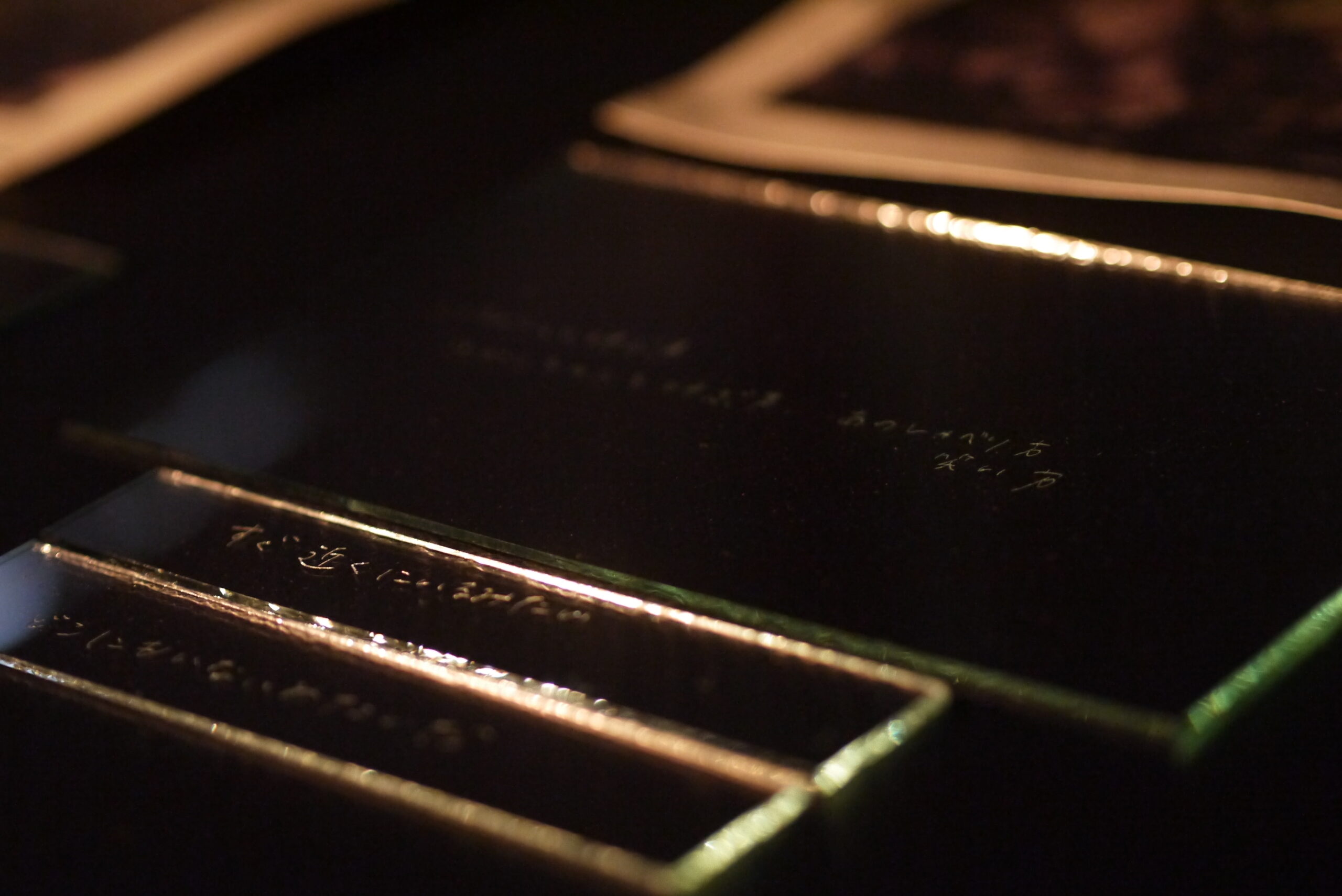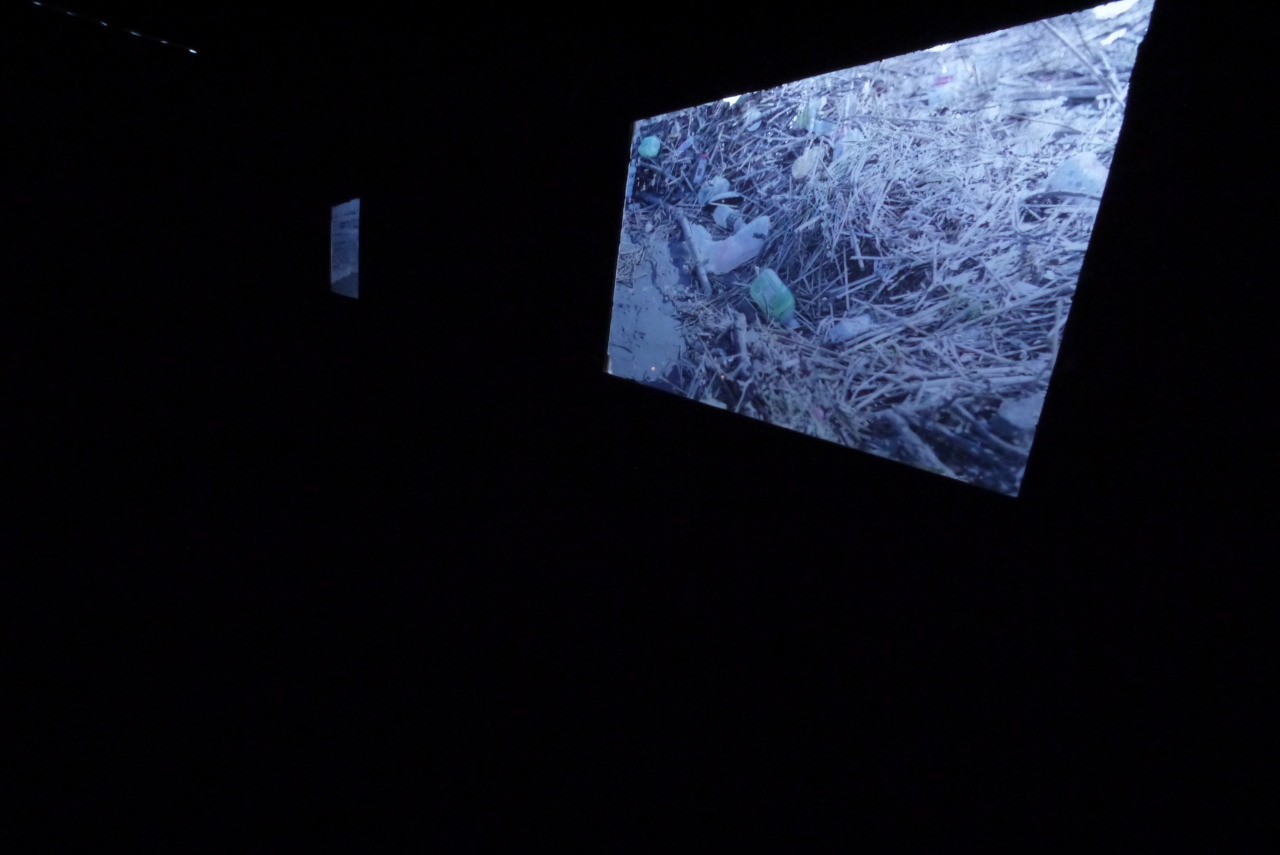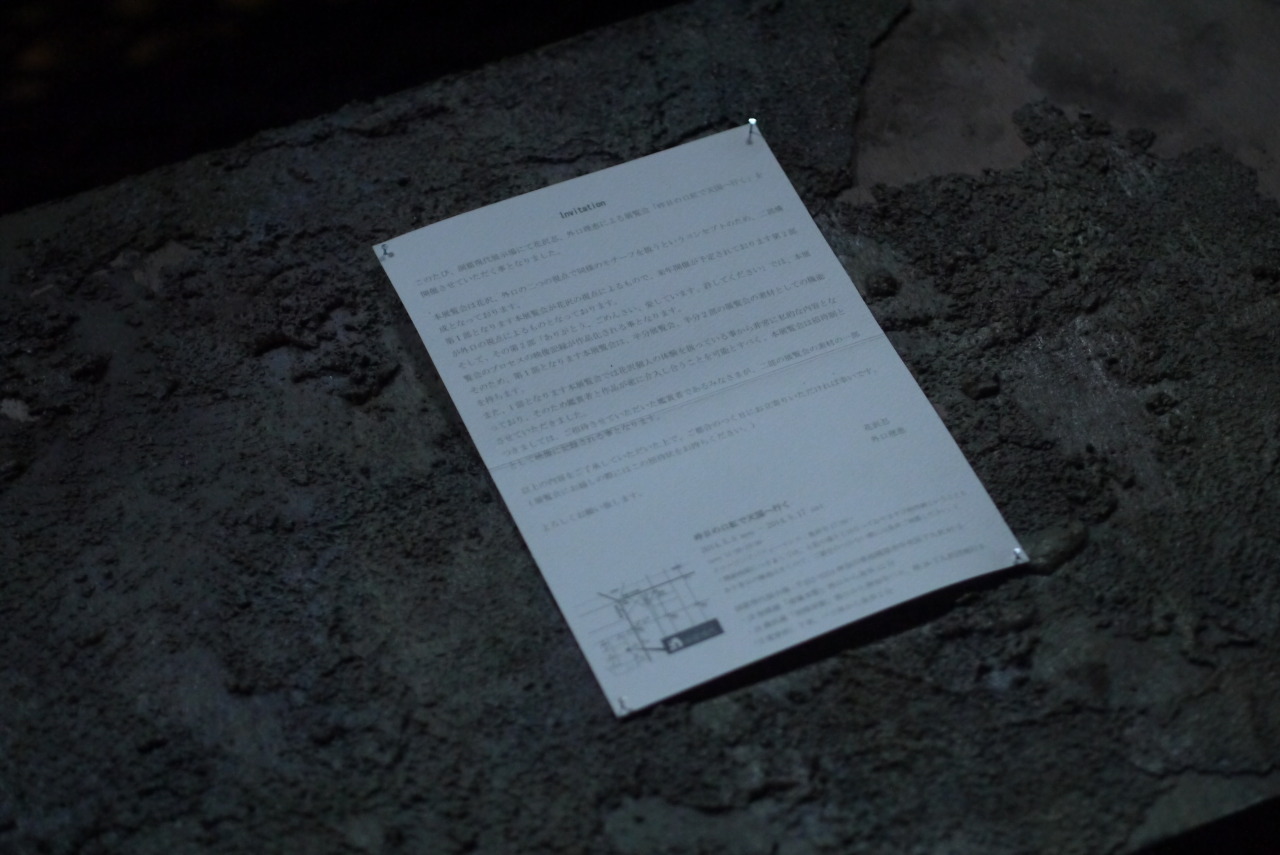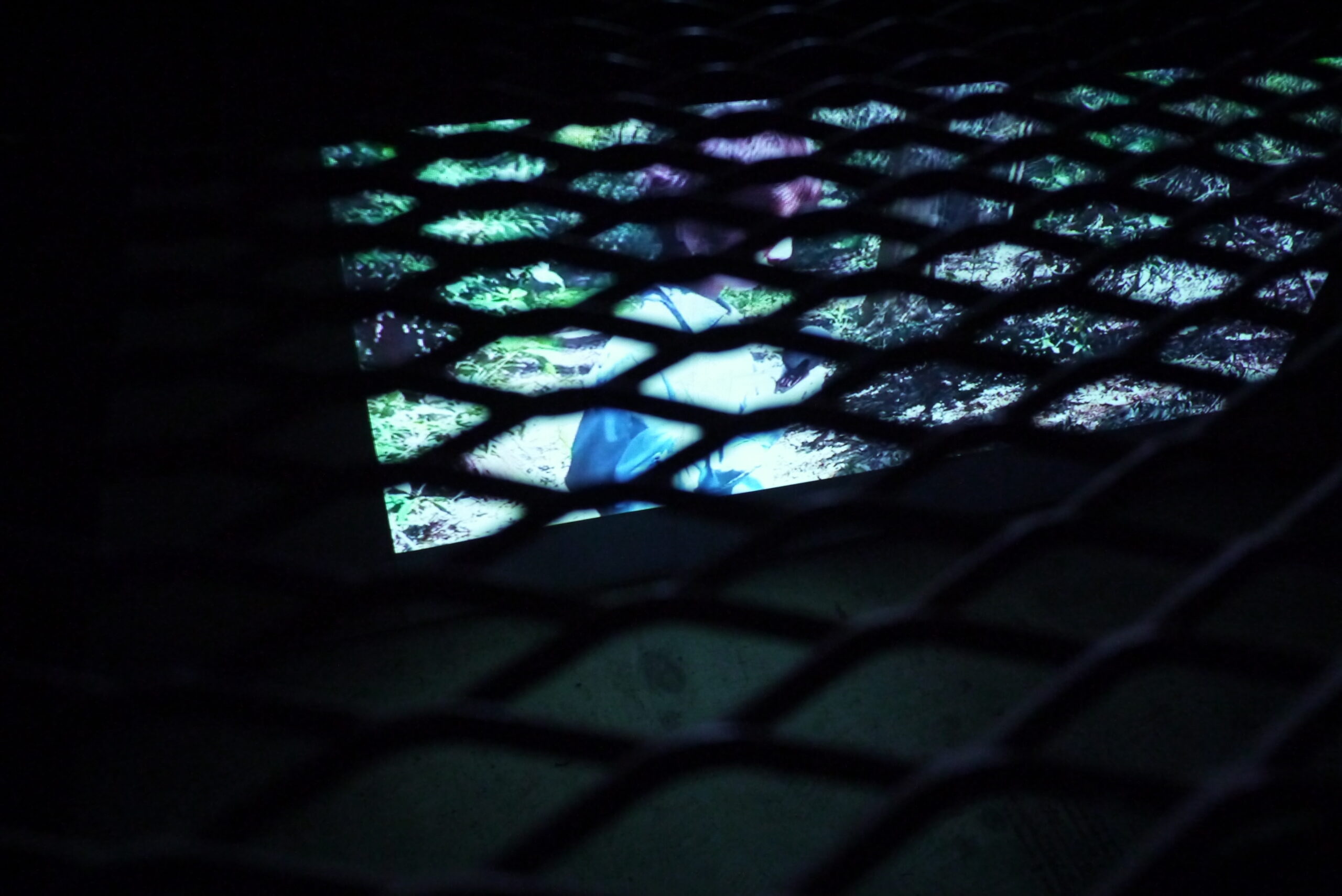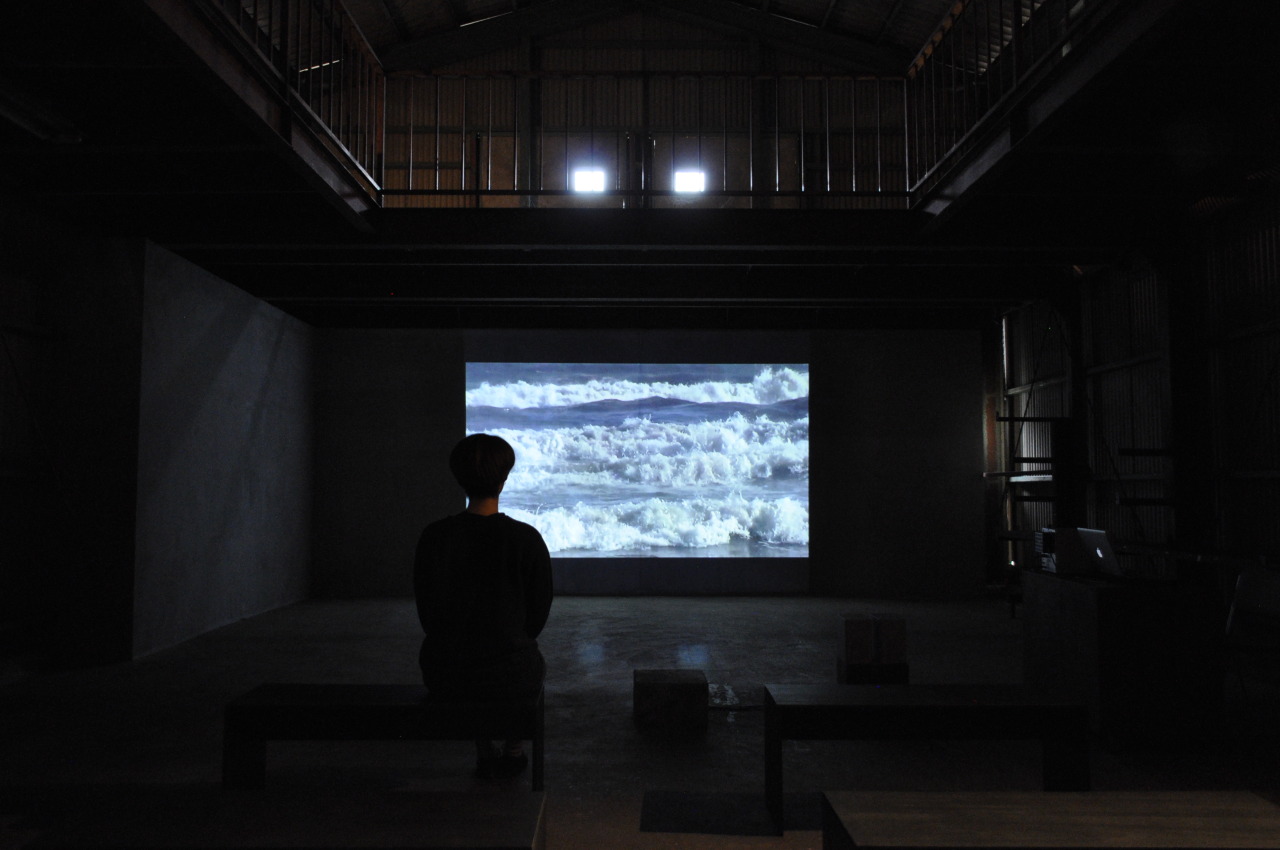

Musubi: documentary of how to face to the dead ムスビの現場
- Date
-
2015
- Venue
-
Cave Contemporary
- Media
-
mixed media
ミクスドメディア
Why do people believe in the necessity of proper “funeral rites”?
That must be because people instinctively know that creativity (Musubi) is involved in the funeral rites.
Human ancestors conceived the tertiary idea that “the dead” do not return to nature directly after death, that they do not die totally, but pass through an intermediate process in which people are not ‘living things’ nor ‘inanimate objects’. They invented the funeral rites ceremony in order to return the dead to nature, in which they have a communication with something non-existent.
Living people change their mind in the course of dialogue with the dead/non-existent. I can view the source of creativity through those changes in such a way that I see the magnificent creativity from the art.
Living people are asking the dead, “What do you want me to do?” They are trying to listen to the dead as if the dead were sending out very slight signals and to deepen their awareness, while knowing it might be a fruitless call. This call also forces them to remind themselves when they were once with the dead. It requires tremendous patience and psychological energy to frantically catch messages from their subconscious. Therefore, they certainly feel the change of their mind and body in this process. What they find by deepening their awareness may not be just beautiful memories. The reason why people patiently sink into themselves in any way could be that they are instinctively aware of the existence of creativity in the silent dialogue with the non-existent. The art is born in a similar process.
People can dialogue with the non-existent. After people have such an experience, they will revitalize their dialogue with real people, who actually do exist. If they can dialogue with the non-existent in a patient manner while not expecting any answer, they should be able to dialogue with real people who can talk, be touched and listened to.
Similar to the opportunity of “funeral rites”, which facilitates the dialogue with the non-existent and existent, the art can be assumed as a visualization of objects which are apparently disconnected from each other, within the context of Musubi=creativity. I think, in any case or any process, a beautiful Musubi=creativity is involved to connect people, minds and opportunities.
The exhibition consists of two parts, having different sights: one is the “private funeral rites” by HANAZAWA, SHINOBU, who experienced the death of her aunt intimate to her, and the second is: a video recording of Hanazawa’s “funeral rites” procession from the view of TOGUCHI, RIE who is an outsider of the private event.
In May 2014, the first part of the exhibition was held, in which HANAZAWA created a private personal space for the funeral rites of her aunt. As it was a kind of pseudo funeral and her personal event, only a limited audience was invited.
In the second part of the exhibition, TOGUCHI created the documentary video movie in which the procedures that HANAZAWA went through, together with the memories of dead person during the funeral rites, and how the audiences were involved at the funeral site, are all recorded.
人はなぜ、正しい「葬礼」の必要性を信じるのか。
それはきっと、そこに創造性 - ムスビ - が宿っていることを本能的に知っているからなのかもしれない。
人類の祖先が、「生きているもの」でも「自然物 ( 無生物 ) 」でもない、死んだものがダイレクトに自然物に 還るのではなく、まだ十分に死にきっていない中間プロセスを経過する「死者」という第三の概念を創出したころ。「死者」を「自然物」へと還すため、存在しないものと対話をするための儀礼として、葬礼が始まった。 死者という「存在しないもの」との対話をとおして変容していく生者の様相の美しさに、私は創造性の原点を感じる。
生者は、死者が考えていることを「あなたは私にどうしてほしいですか?」と、あたかも死者がかすかな、かぼそいシグナルしか発信できない他者であるかのように注意深く耳をそばだて、自身の意識の井戸へと深く、 そしてまた深く潜る。 死者からのシグナルと向き合うのは、かつて死者と共にいたときの自分自身を想起することでもあるからだ。 深くまで潜った先にあるのは、当然美しいものだけではないだろう。潜在意識が飛ばすメッセージを鋭敏につ かみ取ろうとするプロセスには、途方もない辛抱と、ある種狂気じみた精神的スタミナが必要である。それでも、返ってこない返事を求め続けると いう忍耐を放棄せずに自身の井戸の底で「存在しないもの」と対話ができたとき、心と身体には確実に変容が生じるように思う。
そうして井戸の底から戻って来られたならば、今ここにいる、生身の人間として触れることができ、声を聴くことができる「存在するもの」と、今度は新たなまなざしで対話ができるだろう。
芸術も、葬礼も、どちらも同じように辛抱強く潜り続ける理由は、「存在しないもの」との対話の意味を、 そしてそのプロセスごとすべてに、人と、心と、場をつなぐ美しい創造性 ムスビ が宿ることを本能的に感じてきたからではないだろうか。
本展覧会は、花沢忍が経験した身近な人の死をめぐった葬礼としての作品と、それを記録する外口理恵の映像 作品という異なる二つの視点を二部形式の展覧会として構成されており、「ムスビの現場」はその第二部にあたる。
2014 年5月、個人的な人物をめぐった私的な葬礼空間を成立するべく招待制という形で、当事者である花沢 の視点から制作された第一部の展覧会が行われた。そして、その翌年に行われた第二部では、他者である外口の視点から第一部で行った葬礼をとおして花沢自身が死者と向き合うプロセス、そして展覧会という葬礼空間 の場に関わった鑑賞者をも含んだ全記録を、映像をメインに作品化した展覧会として開催された。

